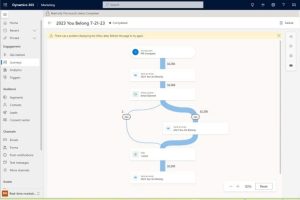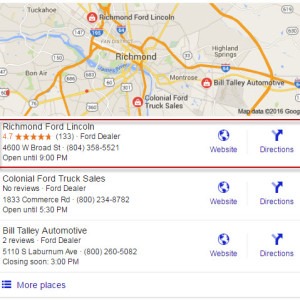 There’s nothing worse than scrolling through Twitter or reading an email on my phone and clicking through to an interesting blog post only to find that the mobile experience is less than ideal. If the content is really interesting, I’ll deal with it. But chances are, the decision-maker at a B2B company you’re targeting is not going to put up with a hard-to-navigate, hard-to-read, hard-to-scroll article, no matter how interesting the content first seemed.
There’s nothing worse than scrolling through Twitter or reading an email on my phone and clicking through to an interesting blog post only to find that the mobile experience is less than ideal. If the content is really interesting, I’ll deal with it. But chances are, the decision-maker at a B2B company you’re targeting is not going to put up with a hard-to-navigate, hard-to-read, hard-to-scroll article, no matter how interesting the content first seemed.
The line between work and personal time is blurring, and mobile’s role in the workplace is increasing steadily. The amount of time people spend on their phones also continues to increase; mobile usage surpassed desktop usage for the first time in 2014, and it’ll continue to increase for the next several years.
Clearly, websites need to be completely optimized for the mobile experience. Your blog—the place where you display high-quality, audience-focused content that attracts new customers—is certainly no exception.
Here are some key elements of a mobile-optimized blog post you need to keep in mind.
1. Short titles
You may have come up with a snappy title, but if it’s going to wrap to several lines of text on a phone and take up most of the screen, consider editing it. You’ve got limited visual real estate and limited time to get your audience’s attention and prompt them to keep reading. Be concise.
2. Responsively and responsibly sized images
Big, beautiful images that span the width of a site you’re viewing on your laptop enhance your experience. However, the user experience might be different when viewing from a mobile device. An image that isn’t optimized might slow down your load time and your reader might decide to leave. Be mindful of how images will look from a mobile device and work closely with your design and development team to ensure images enhance your site, rather than deter from it.
3. Carefully executed pop-ups
We are all for building audiences here at Scribewise, but if you’re trying to gain new subscribers through a modal window, be careful. Make sure mobile readers can easily locate and tap an “X” or “Close” area within the mobile view without having to zoom out. The same goes for advertisements or other messages that interrupt the experience.
4. Fast load times
If your website takes more than a few seconds—2.4, to be precise—your readers will lose patience and drop off. There are a number of reasons your website loads slowly, including the number and size of images and other files, coding errors, and caching issues. You can easily monitor page loading times in Google Analytics; if times increase, work with your tech team to identify and correct errors.
5. Easily-tappable calls-to-action
That B2B decision-maker I mentioned earlier just read your unique, audience-focused blog post and loves what you had to say. She wants to learn more by subscribing or contacting you for more information. Please make it easy to tap or click the call to action (CTA). CTAs on mobile devices should be large enough to tap (Apple says at least 44px wide) easily with enough space around a link so the reader doesn’t inadvertently tap the wrong link.
On the other end of the spectrum, large image CTAs that span the width of the screen are also problematic. It’s difficult to scroll past a wide, linked image without inadvertently tapping it. Test image sizes on different devices to ensure your readers can easily take action.
6. Share buttons
The B2B decision-maker reading your blog might want to share your post with colleagues, or even email it to herself if she’s on the go and wants to revisit it later. Help your reader out by including an email share button along with your standard Facebook, Twitter, and LinkedIn buttons.
7. Short forms
Though screens are getting bigger and mobile design is improving, it’s still difficult to fill out a lengthy form on a phone. Ask for the minimum amount of information—name, company and email should suffice. If you ask for more information, or if your forms aren’t mobile-friendly, you risk losing your reader.
The bottom line
It’s no longer enough to transition to a responsive website without optimizing the mobile web experience. The important decision-makers you’re trying to reach are working from their phones; help them out by making their reading experience better. The bottom line in ensuring your mobile website is optimized and your blog performs well is testing: Look at your blog on your phone and make sure that what you’re posting is easy to read and easy to share.
Digital & Social Articles on Business 2 Community(34)








